During the long history of Formula 1, there have been several drivers who have established themselves as legends and will forever be remembered in the F1 folklore, but alongwith them there have also been those drivers who built up a successful career in other disciplines of motorsport too, there is certainly a different kind of respect for these drivers than their counterparts.In light of the above, here is a top 10 list covering those F1 drivers who had a successful F1 career, but in addition to that, they also went on to garner success in other categories of motorsport.CriteriaFor this list, only those Formula 1 drivers have been considered who have competed in at least three full seasons and have at least secured a victory in the sport.Motorsport events like LeMans, MotoGP and Indy 500 have been given greater importance than others like NASCAR, Tasman series cup, World Sportscar Championship, etc.The Formula 1 career of the drivers has also been taken under consideration. Those who had a successful and consistent formula 1 career and also garnered success in other Motorsport categories have been preferred over others in the ranking order.For those unfamiliar with the different Championship series’ and races to be mentioned in the list, below is a brief insight into what they are all about.24 Hours of Le Mans – the race, taking place across 24 hours, is one of the most prestigious Sportscar/Endurance races in the world which has been organized every year at Circuit de la Sarthe, France since 1923.Indianapolis 500 – an open wheel race taking place around an oval circuit at Indianapolis, California. It has been organized every year since 1914. Alongwith Monaco Grand Prix and 24 Hours of Le Mans it forms the triple crown of motorsport, these three races are considered to be the epitome of racing and is the biggest achievement a driver can get in his career.CART – an open wheel racing Championship based in the USA, was the prominent racing Championship in the USA since its inception in 1979 and continued to be so until its merger with IndyCar in 2008.IndyCar Series – beginning in 1996, the series serves as the highest level of open-wheel racing in the USA, especially now, after its merger with CART.MotoGP – it is the highest class of motorcycle racing, whose winner each year is awarded the title of World Champion, just as in Formula One.
#10 Phil Hill
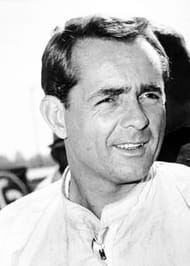
The American, although driving principally in F1, also made a name for himself in endurance racing. After impressive performances in Sportscar races in the USA, he was signed up by Ferrari in 1956. With them, he found success in both F1 and other motorsport categories.
He had wanted to drive in F1 for some time, but had been consistently refused by Ferrari, but finally in 1958, they were forced to give him a drive with the team due to the deaths of their drivers Peter Collins and Luigi Musso. Hill impressed immediately in his debut season and garnered two podiums in just the three races he participated in. The following two seasons brought further podiums and victories and it was in 1961 that he succeeded in winning the title after a closely fought season long battle with teammate Wolfgang von Trips.
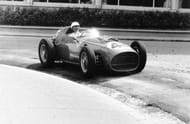
With the Italian outfit, he continued to attain glories in other Championships, which included three victories at the 24 Hours of Le Mans in 1958, 1961 and 1962 and also victories at the 12 Hours of Sebring in 1958, 1959 and 1961.
After winning the F1 world title, his performances declined as his stints with teams like Porsche, Cooper, Eagle, etc proved to be uncompetitive. He finally retired from F1 in 1966 and then from racing altogether the following year.
#9 Jacques Villeneuve
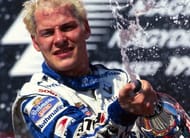
Following the footsteps of his father Gilles Villeneuve, Jacques also pursued a career in motorsport.
He began his senior career with the CART Championship in the USA in 1994. The following year, he succeeded in winning the Championship and also in addition to that took victory at the Indianapolis 500 even after suffering a two lap penalty.
These results proved enough for Williams F1 team to sign him up for the 1996 F1 season. The car proved class of the field and Villeneuve took several victories, he even took the Championship battle to the last round, but suffering a retirement it was his teammate Damon Hill who won the Championship. The following year, after a tough fight with Michael Schumacher, in which the two collided at the last round of the season, with Schumacher retiring from the race, Villeneuve took the world title.
But after this success, his career spiraled downwards, as the next year he only finished 5th in the Championship. A move to BAR for 1999 didnt bear much fruit as his woes continued. Although he finished inside top 4 in several races, but the unreliability and uncompetitiveness of the car didnt allow him to challenge for the title. Then finally, after several seasons spent fighting in the midfield, he left F1 midway through 2006.
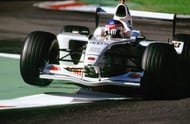
Since then he has been frequently participating in several other Championships and individual race events.
One of the highlights during this while was his second place overall finish at the 2008 24 Hours of Le Mans. Besides this, he has participated in several rounds of NASCAR Series, V8 Supercar Series, Stock Car Brasil, etc but has attained little success in these attempts.
Villeneuve did succeed in achieving some of the greatest milestones a driver seeks to attain in his career and would have achieved even more had it not been for a lackluster second half of his career.
#8 Jim Clark
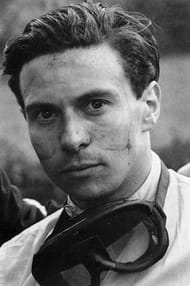
The quiet Scotsman was an extremely gifted driver, who dominated F1 like no one before him and ranks amongst the greatest drivers to have ever graced the sport.
Clark began his racing career, participating in various local race events, where Lotus team owner Colin Chapman, noticed Clarks talent early andeventually gave him his F1 break in 1960. This proved to be the start of one of the most successful partnerships ever in F1.
By 1961, Clark and Lotus had already become a force to be reckoned with and the following year they succeeded in finishing 2nd in the Championship. It was in 1963 that Clark truly got going as he won 7 out of 10 races and clinched his first world title.
His success continued as he dominated another season in 1965 to claim his 2nd world title. In fact, such was Clarks dominance that he succeeded winning more races than anyone before him and finished in second place only once in his career.
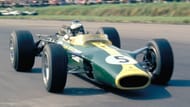
Continuing his association with Team Lotus, in his third attempt, Clark also took victory at the 1965 Indy 500, while finishing 2nd on two other occasions. In Sportscars, again with Lotus, he won the 1964 British Touring Car Championship title. Also, he dominated the Tasman Series, a motor racing Championship in Australia, and won it for a record three times.
Although he didnt win Le Mans, but he did come close with a 3rd place finish overall with Aston Martin in 1960.
With a reputation for an ability to drive all types of cars, Clark would have featured even higher in greatest drivers of all time lists had it not been for his untimely death in a racing crash at Hockenheim in 1968.
#7 Dan Gurney
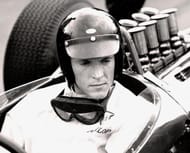
In a career spanning around 15 years, Gurney established his name as one of the most versatile drivers of his era who recorded success across different categories of motor racing.
He arrived in F1 with Ferrari in 1959 and scored two podiums in his debut season. His most successful years in the sport were spent with Porsche and Brabham in the early to mid 1960s, during which he stacked up several victories and podiums and also finished inside top 5 in the Championship 4 times. A move to his own team followed in the late 1960s during which he secured another victory, but the cars unreliability meant that he had to retire from most of the races. Finally after short spells at Brabham and McLaren, he decided to quit the sport after 1970.
Alongwith his F1 career, Gurney consistently took part in races in different Championships, which resulted in strong showings at Indianapolis 500, NASCAR, Indycar, Sportscar and of course F1.
Parallel to his F1 career, Gurney also consistently took part in Indianapolis 500, which he failed to win but took three podiums in late 1960s.
His career in NASCAR, although brief but is worth mentioning, in a total of 16 races he notched up 10 poles, 8 podiums and 5 wins. Also, in 1980 he made a shock one race return to the series in which he ran as high as 3rd before eventually the transmission on his car let go. His Indycar career statistics bears a high resemblance to NASCAR as in only 30 starts, he amassed 7 wins, 10 poles and 16 podiums.
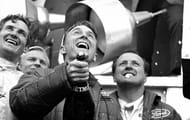
If these achievements arent enough, his victory record also includes races like 24 Hours of Lemans in 1967, 12 Hours of Sebring in 1959 and race victories at TransAm and Can-Am Championships.
After retiring from all forms of racing in 1970, Gurney devoted his entire time towards managing his own team All American Racers which is still in operation and has found considerable success in the USA.
#6 Jacky Ickx
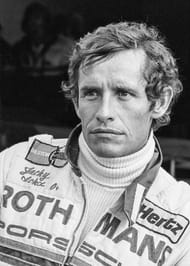
As a teenager, Ickx started racing motorcycles, but noticing his talent in automobile racing, he swiftly switched his career. During his early career, it was Ken Tyrell who spotted his talent and took him under his wing. With his team, Ickx dominated in the junior formulas and also qualified a strong 3rd at the 1962 German Grand Prix in an F2 car. These performances proved enough for Ferrari to sign him up for the 1968 season.
With them, he entered the best stage of his F1 career, as he took several wins and a 2nd place in the 1970 Championship. In the mid 1970s, he started inclining more towards Sportscar racing than F1, thus his appearances in F1 during this period became rarer, before retiring form it altogether in 1979.
All in all, Ickx took 8 victories, 13 pole positions and 25 podiums during his F1 career.
But, it would be for his exploits in Sportscar races that he would be most remembered for. He won the World Sportscar Championship twice consecutively from 1982-83 and also more importantly from 1969 to 1982, took 6 victories at the 24 Hours of Le Mans, it was a record which stood for more than 20 years. His first victory in 1969 remains the most memorable, as after a strong tussle for the lead with Hans Herrmann, Ickx finally came out on top and won by just a few seconds. From mid 1970s up until early 1980s, Ickx alongwith Porsche won Le Mans 4 times and stood 2nd thrice, thus forming the most successful driver-team partnership at the time.
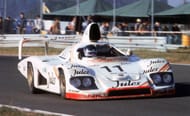
His other prominent successes include winning the 1983 Dakar rally title, which remains famous for being one of the most dangerous races in the world and also the 1979 Canadian American Challenge Cup (Can-Am).
The Belgian attained a respectable but a bit unlucky career in F1, mostly due to uncompetitiveness of many of the cars he raced in, but it is for his unprecedented achievements in Sportscar racing that he will be revered for the most.
#5 Emerson Fittipaldi
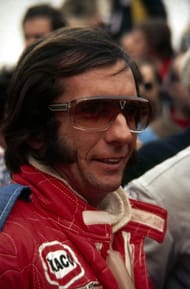
The legendary Brazilian has had a very long career in Motorsport, with his last major race being as recent as the 2014 6 hours of Sao Paulo, which he participated in at the age of 67.
After junior formula successes in Brazil, Fittipaldi promptly moved to the U.K. in 1969 and performed strongly in British Formula 3 and Formula 2.
His full time graduation to F1 in 1971 was sudden, being the reserve driver for Team Lotus, Fittipaldi was thrusted with no. 1 status in the team after the death of its star driver Jochen Rindt and the departure of his teammate John Miles from the team.
After a strong 1971 season, which produced several podium finishes, he duly clinched the world title after a dominant season which saw the Brazilian take 5 victories. He achieved this feat at a mere 25 years of age thereby becoming the youngest ever World Champion, it was a record that he went on to hold for more than 30 years. In 1974, he joined the new and promising McLaren team, a move which immediately proved fruitful as he won his second world title. But, it was from 1976 onwards that his career took a steep dip as after joining his brothers team Copersucar, apart from a few podiums, there was hardly anything else worth noting for. Thus after 5 years with the team, finally in 1980 he left F1 and took a brief sabbatical from racing.
Then, it wasnt until 1984 that he made full time return to racing with CART series in the USA. With Patrick Racing, he achieved several victories and the CART title alongwith Indy 500 in 1989. A move to Team Penske followed in 1990 during which period he continued to secure podiums and victories. Especially in 1993, he won the Indy 500 and finished runner-up in the Championship to the then defending F1 World Champion Nigel Mansell. This was followed by an another 2nd place in the Championship the following year, but his full time career abruptly ended after he suffered injuries at the 1996 Michigan 500 race. Although later he fully recovered from his injuries, but still decided not to return to full time racing.

Since then, he has remained active in motorsports with occasional participations in individual race events.
Fittipaldi enjoyed a long and successful career in motorsport and proved to be the pioneer towards opening gates for other Brazilain drivers like Nelson Piquet, Ayrton Senna, Felipe Massa, etc in gaining worldwide fame.
#4 Mario Andretti
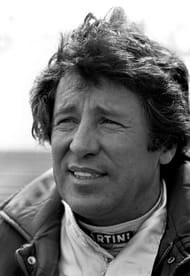
The Italian born American enjoys rarest of the distinctions of having won races in F1, Indycar, Sportscar World Championship and NASCAR. He particularly endured a long lasting career which began in the late 1950s and lasted until the late 1990s.
Before entering F1, Andretti had already won the 1965 Daytona 500 NASCAR race and more importantly the 1969 Indianapolis 500.
Prior to devoting himself fulltime to F1, he had participated in individual races during several seasons and had been a race winner with Ferrari in 1971. He then signed up with Parnelli team for the entire season, but it was in 1976 that his fortunes in F1 really went up when he signed up with Colin Chapman led Team Lotus. After a competitive season in 1977, Andretti duly delivered the world title the following year in the Lotus 79, a car which made full use of ground effect technology.
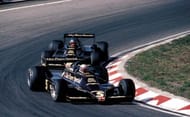
The following seasons with Team Lotus and Alfa Romeo did not yield much results and he finally left the sport in 1981.
He then joined the CART Championship in USA, which he won in 1984, while finishing 3rd the previous two years. After this, he continued in the Championship for another ten years, bringing in several victories.
Besides these achievements, he also found success at the 24 Hours of Le Mans, finishing 3rd in 1983 and 2nd in 1995.
Thus, it is no surprise why Andretti is highly revered in the USA and around the world. Andretti name has now become synonymous with racing, with his son Michael and grandson Marco all enjoying successful motorsport careers.
#3 Graham Hill
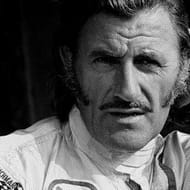
Beginning his racing career very late in his mid 20s, Hill in a short while climbed up to Formula 1 and forged a successful career across varied categories of racing.
In the late 1950s, Hill joined Team Lotus as mechanic, but eventually convinced Colin Chapman to drive for the team. His two seasons with the team from 1958-59 did not bear good results, due to which he signed up with their rivals BRM from 1960 onwards. Thus began a partnership, which found immense success. After two troublesome seasons, the Brit finally took the world title in a dominant 1962 season. This was followed by three successive 2nd place finishes in the Championship, with 1964 being the closest in which he lost the title by a single point.
In 1967, Hill rejoined Chapmans Team Lotus to form one of the greatest driver pairings ever in Formula 1 alongside Jim Clark. Clark took the title that season, with Hill suffering numerous retirements, but following the sudden death of Clark, it was Hill who kept the teams morale high and convincingly won the world title.
Hills later career in F1 did not garner much success as he finally retired from racing in 1975 to concentrate more towards running his own team.
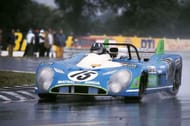
Besides F1, Hill took victory in his first attempt at Indy 500, with Scotsman Jim Clark finishing a close 2nd. Also, after failing numerous times, approaching the twilight of his career, Hill also took victory at the 24 Hours of Le Mans. Thus he became the only driver to have won all the three coveted races, Monaco Grand Prix (which he won 5 times), Indianapolis 500 and 24 Hours of Le Mans, referred to as the Triple Crown of Motorsport. This is a record which has stood the test of time with there being no other driver who has equaled it yet.
Hills shocking death in a plane crash in 1975 left a void in motorsport world which will never be filled. But his name lived on, as later in 1996 his son Damon too claimed the world title, thereby becoming the only father son duo to have won world titles.
#2 John Surtees
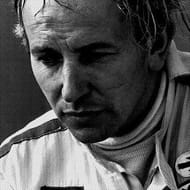
Surtees is widely known much more for his accomplishments in MotoGP than in Formula 1. Son of a motorcycle dealer, Surtees got taste of motorcycles very early in his life. After participating in individual races spread over several years, he finally got a full season contract with MV Augusta for the 1956 season. With them he clinched the 500cc title in his debut year and then won the title three times successively from 1958-60. Especially in the 1958-59 seasons, he went on an amazing streak winning each race bar one during this period. In addition to this, during 1958-60 seasons, he also claimed three successive 350cc titles.

In 1960, alongside MotoGP, Surtees took time out to participate in several Grand Prix races for Colin Chapmans Team Lotus, which produced a podium and a pole position. Now hooked to F1, Surtees left MotoGP altogether and joined Reg Parnell Team for 1961-62 seasons, a period which produced several competitive drives from the motorbike champion.
Highly impressed by his talent, he was recruited by Ferrari from 1963 onwards. Through his prowess both behind the wheel and as an engineer, he brought the Maranello based outfit which had underperformed for the past couple of seasons, back in contention for the world title. Then in a tough but competitive 1964 season, he leapfrogged Lotus Graham Hill by just 1 point to take the Championship glory.
After his Championship success, he continued to impress with teams like Cooper and Honda and scored several wins and podiums, but consistency in performances suffered the lack of reliability of cars that he drove during this period. Then finally, a small stint in his own team from 1970 followed, but he finally bade adieu to F1 after 1972.
Besides these successes, also worth noting is his third place finish at the 1964 24 Hours of Le Mans for Ferrari.
Surtees built up a career, which is nearly impossible for any other professional racer to match, thus it is no wonder that his record of winning both F1 and MotoGP titles remains unmatched even after passage of over 50 years since he won these titles.
#1 Juan-Pablo Montoya
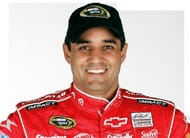
Montoya is one of only few currently active drivers who have achieved success across various disciplines of motorsport. Beginning his career in the USA, he became only the second rookie after Nigel Mansell to win the CART title in his debut season in 1999. Then the following year, in his first attempt he also managed to win the prestigious Indianapolis 500.
This result fast-tracked his F1 career in which he debuted a year later with the Williams team. He enjoyed considerable success there, winning 8 races including the 2003 Monaco Grand Prix. In 2003, he also emerged as a Championship contender with several strong performances, but eventually finished 3rd. His F1 tenure is especially remembered for his many duels on track with Michael Schumacher, the two more often than not came wheel to wheel producing one of the most exciting racing in the history of the sport. From 2005 onwards he joined McLaren, but falling out of love with the sport, he left mid-way through 2006 season to join NASCAR.
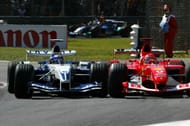
His 8 years in NASCAR produced an average career, wherein he secured two wins including 9 poles and 59 top 10 finishes.
In 2014, he returned to open wheel racing with Team Penske in the IndyCar series. He won several races and eventually finished 4th in the Championship. His current season this year has proved to be even better, with several wins including another Indy 500 victory after a gap of 15 years and is as of now leading the Championship.
During the mid-late 20th century, it used to be common for drivers to participate in Championships other than F1, but with the arrival of too much professionalism, this trait has waned a bit, but Montoya truly stands as the greatest example among the present drivers who have attained all round success.
